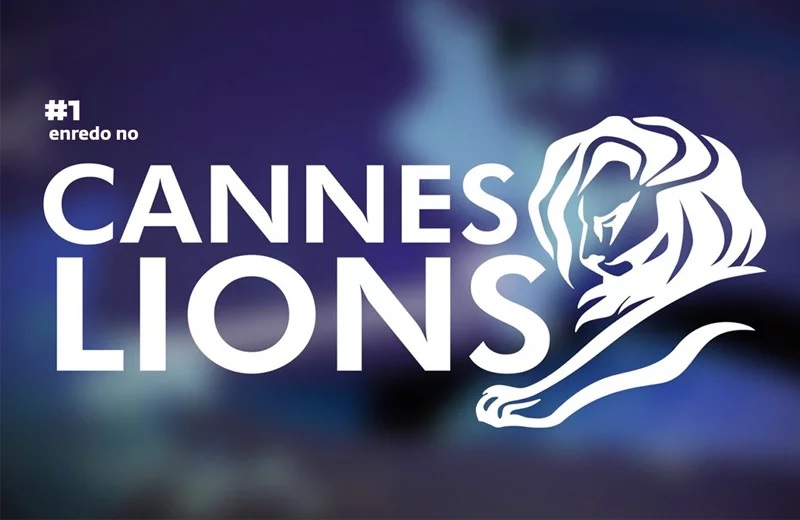Going to Cannes for the second time feels a lot lighter, with the impression that there is now time to really appreciate all the content, not just the talks but the work on display and the people. A highlight was the Samsung stand, showing how the Galaxy S7 and technology can take you to many places. There we had the chance to try out the Samsung Gear VR, virtual reality that is more real than ever, simulating a rollercoaster with a 360º view. Awesome!
Here's the most interesting thing we captured from the first day:
Snask: Make Enemies & Gain Fans
Snask is a design and stop motion studio based in Sweden and internationally renowned for a variety of reasons, from the quality and originality of its work to its rock'n'roll attitude, which makes it clear how important it is for a brand to position itself in a distinctive and real way.
The guys end with a quote from the Swede August Strindberg: "In trying to do the impossible we should reach the maximum level of the possible".
Taylor Herrings / The Guinness Book
Two lectures highlighted the importance of Brand Content and complemented each other with practical examples of how this approach has helped to solve the challenges of communication today and in a present that is increasingly bombarded with information and people ignoring advertisements. The advice on brand content was reinforced: "Go easy on logos because that kills a story".
The recipe proposed by the Guinness Book for brands to become legendary is: imagination, differentiation, dedication, validation and the ability to amplify. The stage also had room for a new world record: the greatest number of 360º turns on a unicycle in 1 minute.
David Copperfield:
The world's greatest illusionist came to the Cannes festival to show that his feats go far beyond magic tricks, making an analogy with the reality and challenges facing brands today.
David reinforces that his success and his business is not about tricks or making things disappear, but about being passionate about telling stories - ". Illusion alone has never satisfied me. There's always an emotional context, a relationship involved, and that's the point"
"The biggest difficulty for everyone today is to do it simply. It's extremely complex to be simple and keep an audience engaged at every step of a story."
In addition to his speech, David performed two sensational numbers with the audience.
From ego to empathy
As a young designer you may have heard this phrase a lot. But what does it mean? As someone who is pretty empathetic and self-critical, I never felt like it applied to me. But in retrospect, I think that's because most people use "ego" to describe inflated self-importance, when it's really just a word that describes how we understand our personal identity.
The distinction is important because letting go of your ego can be a nuanced practice in empathy. It's not just advice for arrogant jerks, it's essential for anyone working professionally. As a designer, my thoughts, tastes and keystrokes obviously are part of the equation, but it took some time to figure out that I could not create work in a silo as a reflection of my "aesthetic."
To some of you this might sound like a bummer, but when you take on a client's challenges and their point of view, you will have to think differently. You will find new approaches and you will grow. But more on that later.
"As a young designer you may have heard this phrase a lot. But what does it mean? As someone who is pretty empathetic and self-critical, I never felt like it applied to me."
Ernst Neufert in "The art of architectural design".

OK, but what does this have to do with my brand?
As a young designer you may have heard this phrase a lot. But what does it mean? As someone who is pretty empathetic and self-critical, I never felt like it applied to me. But in retrospect, I think that's because most people use "ego" to describe inflated self-importance, when it's really just a word that describes how we understand our personal identity.

As a young designer you may have heard this phrase a lot. But what does it mean? As someone who is pretty empathetic and self-critical, I never felt like it applied to me. But in retrospect, I think that's because most people use "ego" to describe inflated self-importance, when it's really just a word that describes how we understand our personal identity.
From ego to empathy

As a young designer you may have heard this phrase a lot. But what does it mean? As someone who is pretty empathetic and self-critical, I never felt like it applied to me. But in retrospect, I think that's because most people use "ego" to describe inflated self-importance, when it's really just a word that describes how we understand our personal identity.
The distinction is important because letting go of your ego can be a nuanced practice in empathy. It's not just advice for arrogant jerks, it's essential for anyone working professionally. As a designer, my thoughts, tastes and keystrokes obviously are part of the equation, but it took some time to figure out that I could not create work in a silo as a reflection of my "aesthetic."
Famous last words
As a young designer you may have heard this phrase a lot. But what does it mean? As someone who is pretty empathetic and self-critical, I never felt like it applied to me. But in retrospect, I think that's because most people use "ego" to describe inflated self-importance, when it's really just a word that describes how we understand our personal identity.
Hope this answers some of your questions, Dmitro.
- Author's name
